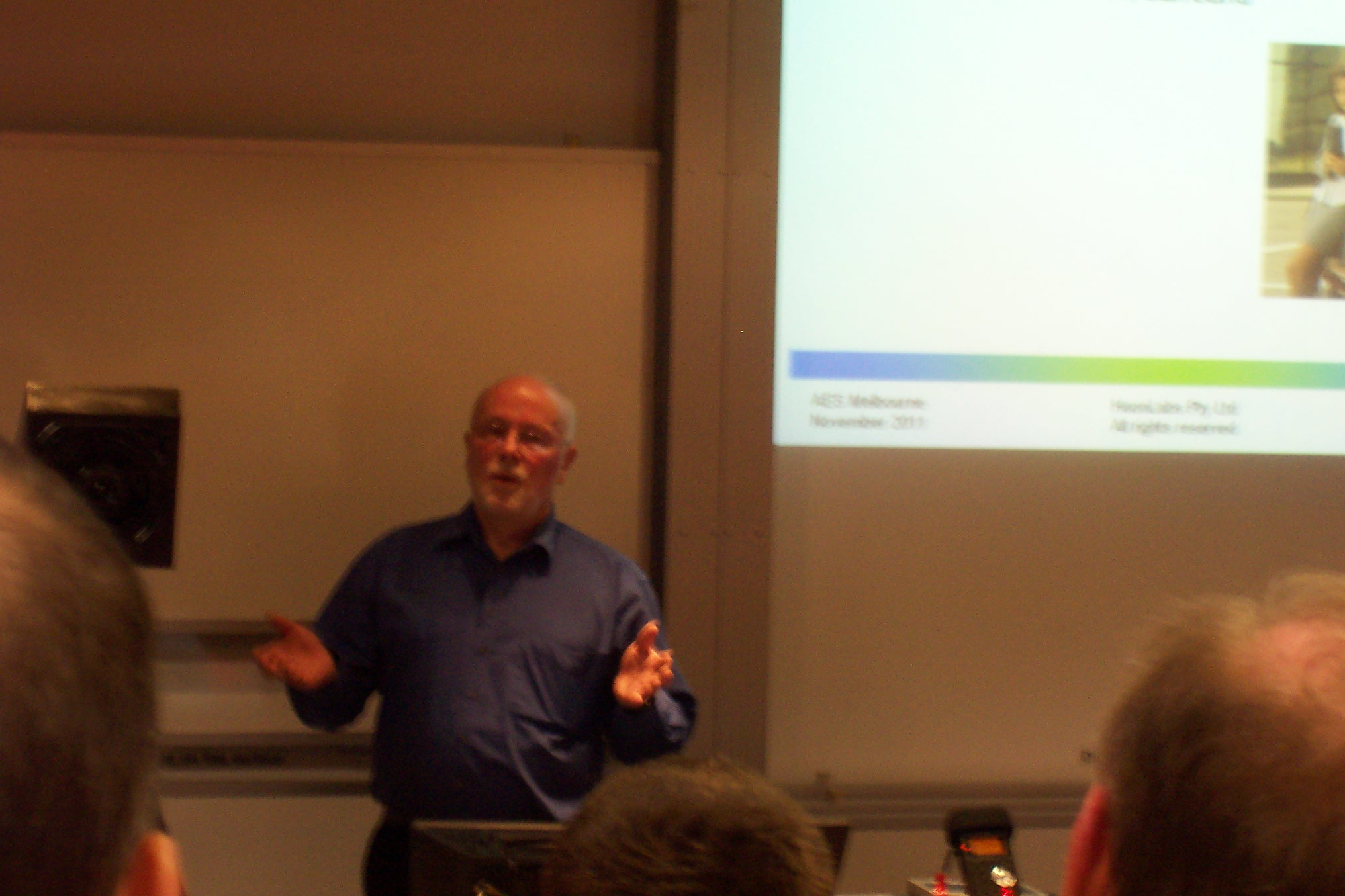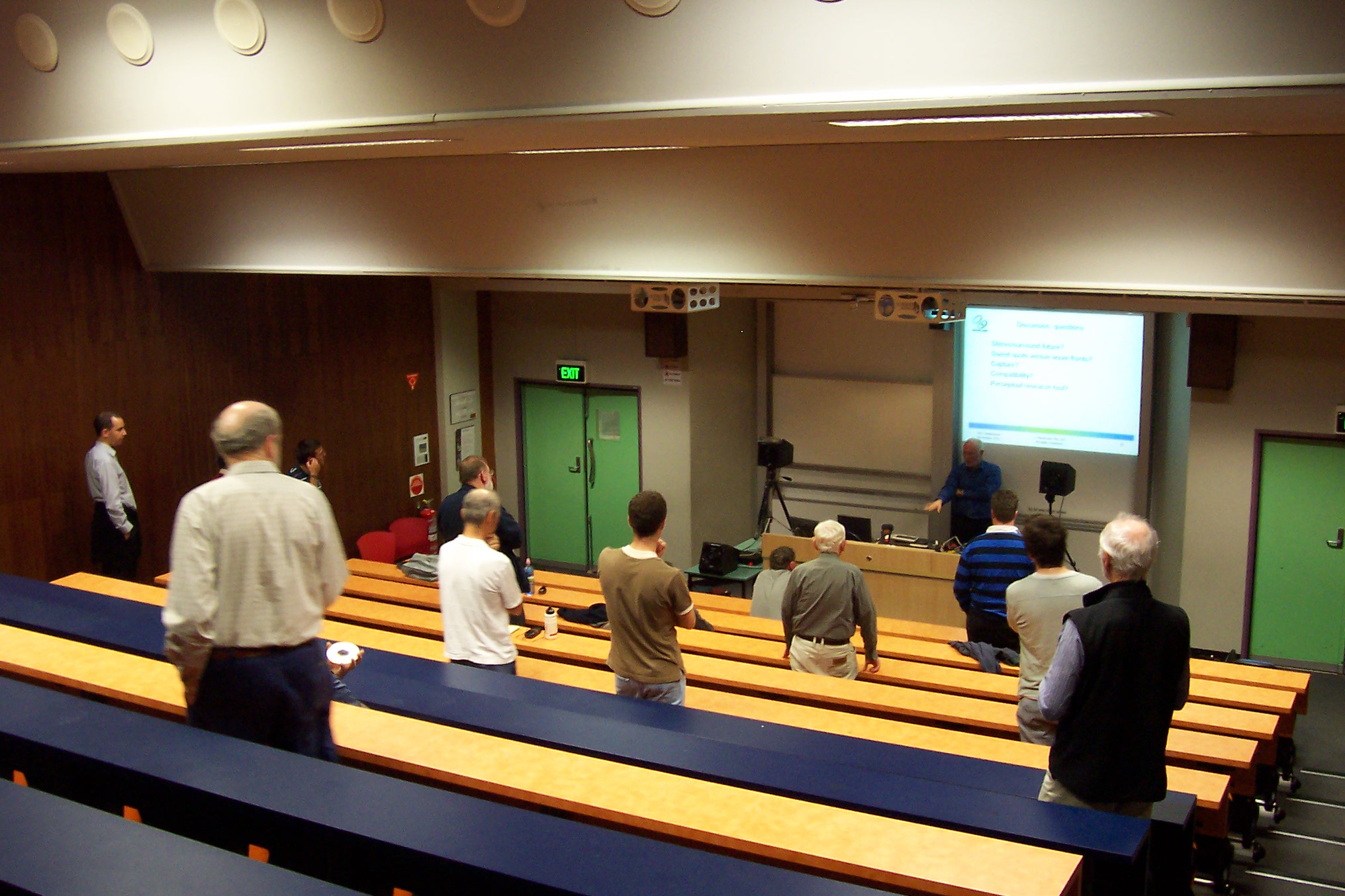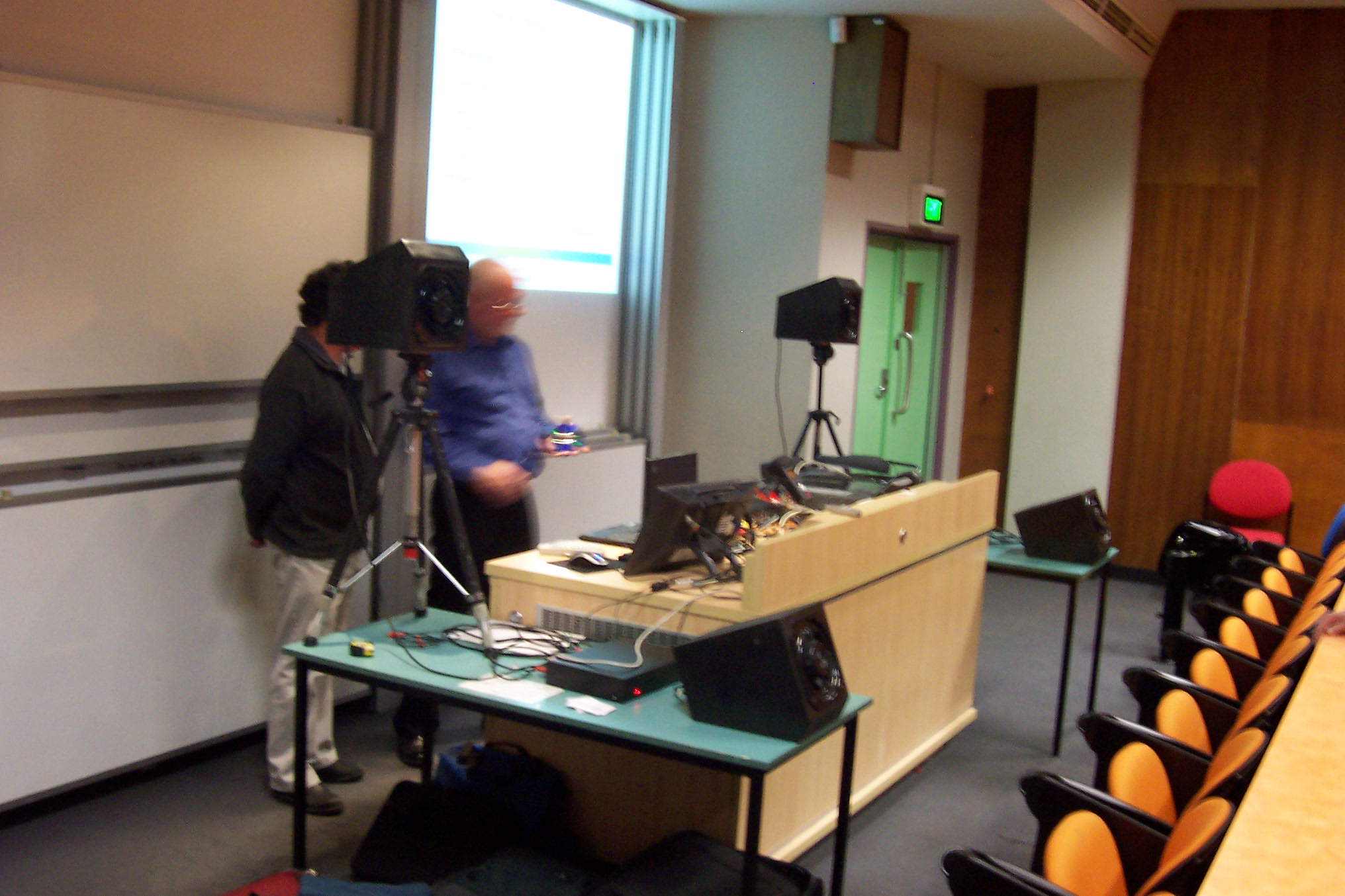The November 21st meeting was held at Swinburne Univ of Technology and featured Graeme Huon providing us with an update and demonstration of his Vector Wave-Front scheme for more realistic localization of reproduced sounds within a sonic space.
A PDF copy of the presentation slides can be viewed here
An audio recording of the presentation can be played or downloaded here
A video of the slide-show plus audio is available below.
Note: video slide-show does not include audience participation or question & answers – refer to audio recording for these.
Graeme firstly provided a brief recap on the existing technologies and systems (5.1, 7.1, 22.2) and their shortcomings – fixed forward perspective and limited “sweet spot”.
He then outlined two new approaches – Huonlabs Vector Wave Front (VWF) and Fraunhofer Wave Field Synthesis (WFS), and described how reproducing audio wavefronts rather than point sources can both eliminate the sweet spot altogether and provide the missing height and distance information.
However he did suggest that the 100-200 speakers required by the Fraunhofer WFS system is unlikely to achieve the “wife acceptance factor” (WAF) necessary to see it succeed in the domestic environment. The Huonlabs VWF only requires 4 channels and 4 speakers, configured as two pairs of end-fire arrays.
Graeme mentioned that ultimately the two speakers of each array could be combined into a single cabinet for a total of two cabinets – providing a much better WAF score.
The second half of the presentation comprised a demonstration of the system using both live-recorded content, and post-encoded material using pre-recorded dry multitrack material.
Further information on HuonLabs and VWF can be found on the HuonLabs website
Graeme Huon describes the principles of his Vector Wave-Front scheme.
As Graeme demonstrates playback of his Vector Wave-Front scheme, the audience experiences the total lack of “sweet spot” limitations, moving freely about the room without losing accurate localization cues.
The equipment required for reproducing VWF is quite modest in size.
An audio recording of the presentation can be played or downloaded here



